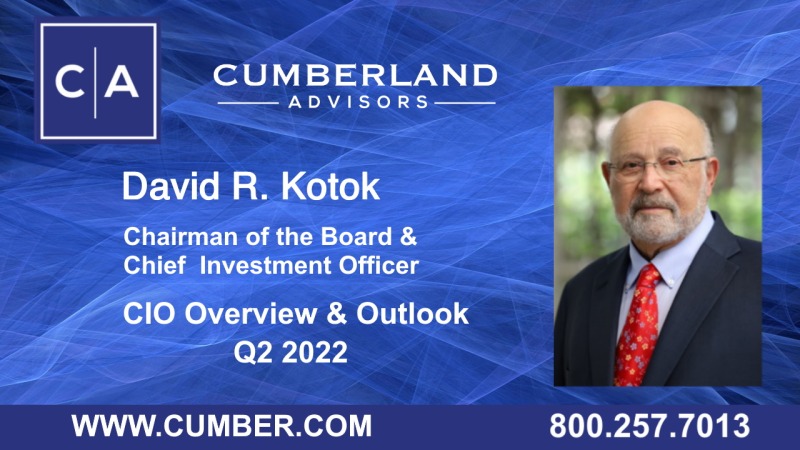The second quarter (2022) in the American stock market has been one volatile mess. We're going to focus only on the stock market, but we need to remind everybody that volatility struck in many asset classes. Look what happened the first half of this year, 2022, from January 1 till now: a full bear market price fall of more than 20% in traditional stock market indices, prices falling 30% or more in some other indices, and by 70% and 80% in some disrupter stocks that had fierce price appreciation during the pandemic lockdown period and have fallen apart since.

In addition, nontraditional investments had massive corrections – like those that make the headlines every day in cryptocurrencies. And the bond markets gyrations have reached four and five standard deviations in volatility. The Treasury bond market gets the headlines all the time, but the municipal bond market, corporate bond market, and mortgages also suffered shocks.
The first two quarters of 2022 saw sequential, broad multi-asset-class shocks. To add to that picture, housing is now rolling over. The housing story is deteriorating, so we could really conclude that this has been a broadly correctional period covering all kinds of asset classes. At the same time, we have seen shocks in the international arena and adjustments in foreign exchange ratios and currencies. And we had commodity price shocks in all kinds of things, oil being the massive headline.
What does all this mean for the stock market going forward? We've always said that, in the end, stock prices in the United States are dependent on the aggregate earnings of the companies that compose the indices, along with the growth rate and expected outlook for those earnings. There’s lots of volatility around the price; but at the end of the day, it's how much a company can make in profit on a continuing basis that determines the stock price of that company. Lots of factors can adjust it, like stock buybacks or other transactions such as mergers and acquisitions or financing policy using or not using debt; but finally, it's the earnings per share of a company that is the primary driver of the value of its shares.
We don't see a massive deterioration in earnings. We do see a contraction in economic activities which may slow earnings growth rates. We do see a shrinking US GDP of the United States in both quarters so far this year. In the old days, that would meet the technical definition of a recession: two down quarters in GDP. That definition has been replaced with a different definition of a recession, which we won't get for another year, until the National Bureau of Economic Research looks backwards a year or two and says, oh, we had a recession then. By that time, what difference will it make?
So our outlook for stocks in the US depends on a continuing demonstration of earnings power. How fast those earnings grow will depend on how much the economy slows and how quickly the Federal Reserve transitions itself to something new and normal. We think the normalized policy focused short-term interest rate will be somewhere between 3% and 4% before this is all over, and we expect the Fed will want to get it there quickly rather than gradually. But that's a guess; we don't know for sure.
We do see is that American corporations are adjusting very quickly to these circumstances, as extraordinary as they may be. We'll look for the second quarter earnings reports to come out in July and August, and they will reveal a lot about the earnings momentum of companies. As the second quarter of 2022 draws to a close, we are maintaining a cash reserve in our US Equity ETF accounts. We have an overweight position in the aerospace/defense sector and the healthcare sector and the semiconductor sector, and we have an underweight position in the financial sector and particularly with banks, because we think the long period of banks funding at a zero interest rate is over.
David R. Kotok
Chairman & Chief Investment Officer
Email | Bio
Links to other websites or electronic media controlled or offered by Third-Parties (non-affiliates of Cumberland Advisors) are provided only as a reference and courtesy to our users. Cumberland Advisors has no control over such websites, does not recommend or endorse any opinions, ideas, products, information, or content of such sites, and makes no warranties as to the accuracy, completeness, reliability or suitability of their content. Cumberland Advisors hereby disclaims liability for any information, materials, products or services posted or offered at any of the Third-Party websites. The Third-Party may have a privacy and/or security policy different from that of Cumberland Advisors. Therefore, please refer to the specific privacy and security policies of the Third-Party when accessing their websites.
Cumberland Advisors Market Commentaries offer insights and analysis on upcoming, important economic issues that potentially impact global financial markets. Our team shares their thinking on global economic developments, market news and other factors that often influence investment opportunities and strategies.

